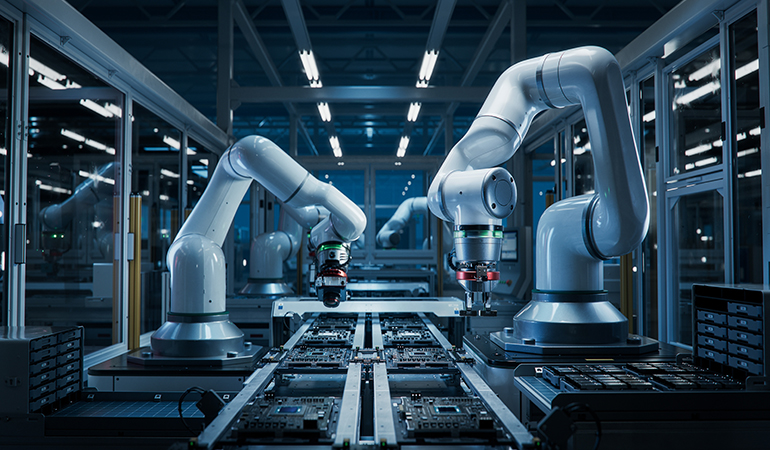In the highly competitive world of manufacturing, efficiency, speed, and quality set you apart. One concept that encapsulates these critical factors is “time to value.” This term refers to the period between the initiation of a manufacturing process and the moment when the product generates revenue. Minimizing this time frame is essential for several reasons: it enhances cash flow, reduces inventory holding costs, improves market responsiveness, and ultimately increases profitability. In this article, we will explore why time to value is critical for manufacturing organizations and how to improve manufacturing efficiency with digital technologies.
The importance of time to value
Cash flow optimization. Cash flow is the lifeblood of any business. For manufacturing business, the ability to quickly convert production activities into revenue is crucial. Shortening the time to value means that companies can reinvest in operations, pay off debts, and finance new projects much faster. This improved liquidity can lead to a more robust financial position and greater agility in responding to market opportunities.
Inventory management. Holding inventory ties up capital and incurs storage costs. By reducing the time to value, manufacturers can minimize the amount of inventory they need to keep on hand. This not only frees up capital but also reduces the risk of inventory obsolescence, particularly in industries with rapid product cycles or where products can quickly become outdated.
Market responsiveness. In today’s market, an instant response to customer demand and market changes is a significant competitive advantage. A shorter time to value allows manufacturers to bring products to market faster, meeting customer needs more promptly and effectively. This agility can lead to increased customer satisfaction and brand loyalty.
Profitability. Ultimately, the faster a product can be sold and revenue realized, the more profitable the manufacturing process becomes. By reducing the time to value, companies can lower their overall production costs and increase their margins. This efficiency not only boosts profitability but also provides a buffer against market fluctuations and competitive pressures.

Digital technologies enhancing time to value
The introduction of digital technologies has already revolutionized manufacturing processes, providing new tools and methodologies to streamline operations and reduce the time to value. Here are several ways digital innovation and high-tech engineering services can further evolutionize the sector and bringing tangible benefits:
Automation and robotics
Automation is a cornerstone of modern manufacturing. By employing machine-driven devices and automated systems, manufacturers significantly speed up production processes. Robots can work around the clock without fatigue, ensuring consistent output and reducing human error. Advanced intelligent automation takes digital manufacturing a step further, enabling more precise and faster production, which leads to quicker turnaround times from raw material to finished product.
Advanced analytics and AI
Data analytics and artificial intelligence (AI) are already tangible assets shaping the future of the industry. The technologies help analyse and process vast amounts of data to identify patterns, spot inefficiencies, and suggest improvements. Predictive analytics can forecast demand, optimizing production schedules and reducing lead times. AI, powered by machine learning capabilities, can also enhance quality control by detecting defects early in the production process, reducing waste and ensuring that products are market-ready faster.
Internet of Things (IoT)
The IoT connects machinery, systems, and products through the internet, enabling real-time data collection and analysis. IoT devices can monitor equipment performance, predict maintenance needs, and prevent downtime. This proactive maintenance approach ensures that production lines run smoothly, minimizing delays and keeping the time to value as short as possible. IoTsolutions can also provide insights into product usage and customer behaviour, allowing manufacturers to adjust their strategies quickly to meet market demands.
Digital twins
A digital twin is a virtual replica of a physical object or system. In manufacturing, digital twins can simulate production processes, allowing companies to test and refine their operations before implementing them in the real world. This can significantly reduce trial and error, speeding up the development and production process. Digital twins can also be used for predictive maintenance and optimization, ensuring that equipment operates at peak efficiency and reducing downtime.
Supply chain digitization
A streamlined supply chain is essential for reducing the time to value. Digital technologies can enhance supply chain visibility and coordination, from procurement to delivery. Blockchain technology, for example, can provide transparent and secure tracking of materials and products, reducing delays and errors. Cloud-based supply chain management systems can facilitate real-time communication and collaboration among suppliers, manufacturers, and distributors, ensuring that materials and products move seamlessly through the supply chain.
Additive manufacturing (3D printing)
Additive manufacturing enables rapid prototyping and swift production of custom parts. This technology is steadily gaining traction as a viable alternative for producing composite tooling and creating prototypes. Consequently, it can significantly reduce lead times for both prototypes and final products, supporting faster market entry. 3D printing can also minimize material waste and lower production costs, contributing to a shorter and more cost-effective time to value.
Enterprise Resource Planning (ERP) systems
Modern ERP systems integrate various business processes, providing a comprehensive view of operations. This technology-and-platform integration enables better planning, scheduling, and resource allocation. With real-time access to information across departments, manufacturers can make informed decisions quickly, streamline workflows, and reduce the time needed to move products from the production floor to the market.
Real-world applications and business cases
To illustrate the significant impact of digital technologies on reducing time to value, I will present a few publicly available case studies. These examples highlight how major players in the sector are leading the way in digital manufacturing by applying innovations to achieve substantial improvements.
- Siemens. Siemens has leveraged digital twins and IoT in their manufacturing processes. By creating digital replicas of their production lines, Siemens can simulate and optimize operations before physical implementation. This approach has reduced their development times and increased their production efficiency, significantly shortening the time to value for new products.
- General Electric (GE). GE has implemented advanced analytics and AI in their manufacturing plants. Using predictive analytics, GE can forecast equipment failures and perform maintenance proactively, reducing downtime and ensuring continuous production. This has enabled GE to bring products to market faster and improve their cash flow.
- Ford Motor Company. Ford has integrated 3D printing into their prototyping process. This has allowed them to rapidly develop and test new parts, reducing the time from design to production. By shortening the development cycle, Ford can introduce new models and features to the market more quickly, staying ahead of the competition

Challenges and considerations for the future of manufacturing
While digital technology in manufacturing offers significant benefits in reducing time to value, its implementation is not without challenges. Digital manufacturers must consider the following:
- Investment costs. The initial investment in digital technologies can be substantial. Manufacturers need to assess the return on investment (ROI) and ensure that the long-term benefits justify the upfront costs.
- Integration and training. Implementing new technologies requires integration with existing systems and processes. This can be complex and time-consuming. Additionally, employees need to be trained to use new tools effectively, which can temporarily slow down operations.
- Data security. With increased reliance on digital technologies and data, cybersecurity becomes a critical concern. Manufacturing business must invest in robust security measures to protect systems and sensitive information against attacks and maintain the integrity of their operations.
- Scalability. As businesses grow, their digital systems have to scale accordingly. Manufacturers need to choose technologies that can adapt to increased production volumes and evolving market demands.
Maintaining a consistent time-to-value ratio is critical for manufacturing organizations, directly impacting their cash flow, inventory management, market responsiveness, and profitability. Digital technologies offer powerful tools to reduce this time frame, from automation and AI to IoT and digital twins. By employing these innovations, manufacturers can not only redesign their operations for better efficiency but also use them as an instrument for bringing products to market faster.
However, the manufacturing industry is at a crossroads, shaken by rapid technological change and the challenge of integrating digital solutions without falling for overhyped technologies. Also, careful consideration of investment costs, integration challenges, data security, and scalability is essential to fully realize the benefits. As the sector transforms, those who identify and effectively leverage the right advanced technology innovations will be strategically positioned to excel in an increasingly dynamic market. Contact Intellias to handle the complexities of digital technology adoption; while you focus on what you do best, we’ll propel your manufacturing business forward with our expertise and experience, ensuring you’re never alone in the journey.


